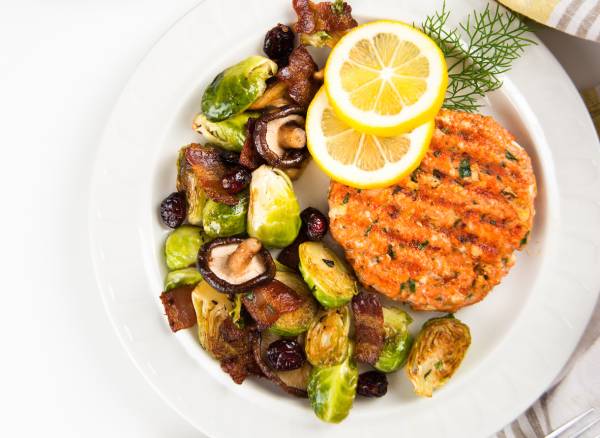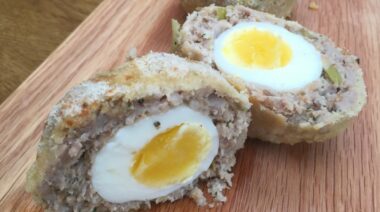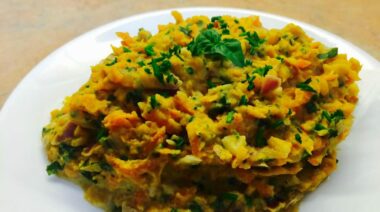After fourteen years of a daily struggle with anorexia nervosa, orthorexia, and exercise bulimia, I was exhausted. I was tired of keeping up with my own rules, my constant dieting, and my conflicting desires to “get well” and stay in the comfort zone of my disorder. I had had enough, and I wanted a way out.
For about thirteen of those fourteen years, I saw countless doctors, therapists, and nutritionists and spent an accumulated total of about 3-4 years of my life in inpatient treatment and hospital settings. I learned the “what” of what to do to get better, but I did not know the “how” of how to get there.
It’s Not Just About Food
Eating disorders are tricky boogers. They fight to keep you stuck in fear. While recovery sounds good in concept, life without a disorder can be daunting. To make things worse, often times, people outside the disorder don’t get it. You will hear the following:
- “Just eat a cheeseburger.”
- “Just put on 5-10 lbs.”
- “Missing a day of exercise is not going to kill you.”
- “Stop counting.”
Easier said than done. Internally, there’s so much more going on. For the person with an eating disorder, eating a cheeseburger equals giving up control. Putting on weight is equivalent to losing your edge. Not going to the gym is lazy and an invitation for flubber on your “problem spot.” And giving up counting is unfathomable.
Are you on the edge of recovery, or at least toying with the idea of what it could look like, yet completely stumped as to whether it is even possible? While no two stories or bodies are alike, here are the steps you need to take to fuel your body during and after recovery.
Step 1: Learn From the Past
The first step is to ask yourself questions about your past experiences so you can understand your relationship with food and the teaching and beliefs that have shaped it.
Consider these questions:
- What’s worked for you before? What hasn’t worked?
- What was your relationship with food like for you as a kid?
- What have your food philosophies been over the years and how have they changed or shifted?
For me, reflecting on my past treatment experiences helped me better understand why I kept relapsing. During my inpatient treatments, foods like Egg McMuffins, takeout pizza, Eggo waffles, and ice cream were regular staples forced into my diet. As a patient, you are often required to eat whatever you are plated, unless you want to be “Boosted” (forced to drink a Boost Plus supplement) or tube-fed.
I always did what I was told, and on paper and the scale I looked as though as I was making progress. Yet time and time again, I’d get out of treatment three or four months later feeling awful in my own skin. I didn’t know how to handle the new weight gain or move in my own body, so I would run straight back to the comforts of my Lean Cuisines, Crystal Light, carrot sticks, and fat free yogurts – a complete pendulum swing from one extreme (treatment) to the other (eating disorder).
I had no concept of what middle ground meant or how to eat and take care of myself in the real world. Within no time, relapse would happen and I’d be right back at square one: forced to enter treatment again roughly 6-9 months later due to my disordered habits and declining weight. Reflecting on my past and what did and did not work during my recovery process helped me to proceed to step number two.
Step 2. Reprogram Your Old Habits
With my new desire to get better came the automatic invitation to start doing something new. After all, you’ve heard the definition of insanity, right? “Doing the same thing and expecting a different result.” I made up my mind to start doing just that – something different, something new.
“I saw my recovery as something fun to be embraced. The mind is a powerful weapon.”
This decision came about during my last and final stint in an inpatient treatment center in Miami. I made up my mind that, no matter how awful I felt in my own skin or how tempting my old ways seemed upon release from treatment, I was not going to run back to my eating disorder.
I was going to have to find out what being healthy, nourishing my body, and exercising for health – not compulsion or obsession – really meant, and for the first time, I began to see recovery as a great adventure. I saw my recovery as something fun to be embraced. The mind is a powerful weapon.
Step 3. Identify and Combat Your Triggers
Logistically speaking, “making recovery choices” for myself meant the following:
- Not climbing back on a StairMaster and finding a new, empowering, and fun way to exercise instead.
- Committing to not restricting my food and my right to eat once I was free from treatment.
- Give up writing down everything I ate in a day, and counting calories.
- Stop looking at the back of every nutrition label in the grocery store or Google searching the nutrition information of every food I placed in my grocery cart.
- Incorporating proteins, healthy fats, and a variety of veggies and carbs into my daily diet.
- Drinking enough water (yes, there was a time water even scared me because it was something in my stomach that made me feel heavy).
- Throwing out my scale, my stacks of fitness magazines with airbrushed cover models, and diet protein powders.
In addition, I made up my mind that, instead of believing all the lies my eating disorder had told me for so long, I was going to get educated on what real nutrition and health meant. The more I learned, the more I began to appreciate the superpowers of nutrition.
Before I knew it, food was becoming more than just something with calories in it or a toxic substance that I felt guilty consuming. A variety of nutrient-dense whole foods were the key to feeling amazing, enhancing my energy, boosting my mood and hormones, and promoting increased brain function.
Step 4. Be Mindful
Creating new habits takes some mental effort at first. When it came to meal times, a general meal template originally helped me learn how to incorporate regular, life-giving meals into my daily routine.
Along with my meal plan, I made a concerted effort to practice intuitive and mindful eating at each and every meal. I’d rate my level of hunger prior to the meal, on a scale of 1-10 (1=starving, 10=stuffed), as well as note any thoughts, feelings, beliefs, reservations, or reactions I had about the food I was about to consume or things going on generally in my day. Following the meal, I’d rate my fullness level, then once again note any particular thoughts or feelings I had. These mental practices translated into healthier eating habits.
Click on page two to see examples of meal plans for successful recovery.
Weekly Meal Plan Template
Breakfast:
- Protein (1-2 palm size hands)
- Healthy fat (1-2 thumbs sizes oils and nutbutters, half of an avocado, fistful nuts/seeds, etc.)
- Veggies (optional; as many as possible)
- Carb source (⅓ cup – 1 cup)
Mid-Morning Snack:
- Protein and/or fat source, sometimes paired with a piece of fruit or veggies
Lunch:
- Protein
- Healthy fat
- Veggies
- Carb source
Afternoon Snack:
- Protein and/or fat source, sometimes paired with a piece of fruit or veggies
Dinner:
- Protein
- Healthy fat
- Veggies
- Carb source
Evening Snack (optional, if hungry):
- Protein

Weekly Menu: Day 1
Breakfast:
- 2 eggs over-easy with spinach
- 2 slices nitrate free turkey bacon
- 1 orange
- 2 Tbsp. raw almond butter
Mid-Morning Snack:
- Homemade protein shake (unsweetened almond milk + blueberries + protein powder)
Lunch:
- Homemade mustard balsamic chicken thighs
- Roasted sweet potato fries drizzled with olive oil and cinnamon
- Steamed broccoli
Afternoon Snack:
- Handful macadamia nuts
Dinner:
- Turkey meatballs
- Spaghetti squash with tomato sauce
- Sautéed kale in coconut oil, sea salt, black pepper
Evening Snack (optional, if hungry)
- Scrambled eggs with spinach + mushrooms
Weekly Menu: Day 2
Breakfast:
- Homemade banana pancakes
- 3 nitrate free turkey sausage links, sautéed power greens
Mid-Morning Snack:
- Handful of leftover chicken
Lunch:
- Hearty salad: turkey burger patties atop mixed greens + Japanese sweet potato + 1 Tbsp. coconut butter + roasted asparagus and zucchini + oil & vinegar
Afternoon Snack:
- Pear + 2 Tbsp. almond butter
Dinner:
- Pan-grilled salmon or cod
- Roasted butternut squash
- Roasted Brussels sprouts, in coconut oil
Evening Snack (optional, if hungry):
- Protein shake in water before bed
Weekly Menu: Day 3
Breakfast:
- 2 hard boiled eggs
- ½ cup steel cut oats mixed with cinnamon, diced peach, almonds, splash of unsweetened almond milk
Mid-Morning Snack:
- 4oz full-fat Greek yogurt (plain) with some frozen berries
Lunch:
- Leftover meatballs
- Roasted sweet potato
- Mixed green salad
Afternoon Snack:
- Turkey rollups with guacamole in a lettuce wrap
Dinner:
- Turkey meatloaf
- Cauliflower mash (cauliflower, chicken broth, 1 tbsp. grass-fed butter)
- Roasted asparagus
Evening Snack (optional, if hungry)
- Homemade almond-flour chocolate chip cookie
Take Ownership of Your Recovery
These are examples of consistent, whole-foods based meals that helped me feel amazing, inside and out. I began to regain energy, feel good in my own skin, take ownership of my recovery, learn how to cook (and actually enjoy it), gain empowerment in the beautiful act of self-care, and on and on.
Today, I am happy to say I no longer require a meal plan or extra motivation to eat. I fuel my body to feel amazing, inside and out. I listen to my body so I can provide it with a variety of nutritious, life-giving foods. Food is meant to fuel your life so you can go out there and live it to the fullest. It’s not meant to dominate or control you.
When in doubt about what decisions to make concerning food choices, meal plans, and recovery, take a pause and deep breath and ask yourself:
What would the healthy version of myself, the recovered person who I aspire to be, do in this situation? What decisions would she make for self-care?
As we think, therefore we become, and our actions follow suit. Think positively.
You’ll Also Enjoy:
- From Diet to Disorder: When Food Control Goes Too Far
- The 2 Days That Changed My Life
- The Missing Link in Your Health: Accepting Yourself
- What’s New on Pulse Beat Fit Today
Photos courtesy of Shutterstock.






